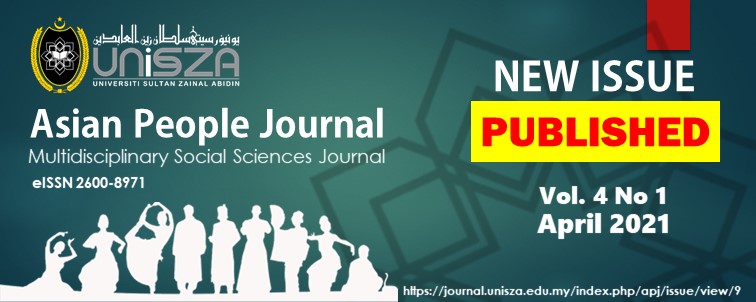WEB 2.0-BASED LEARNING AND THE CHALLENGES OF CULTURE SHOCK AMONG INTERNATIONAL STUDENTS IN CYPRUS
DOI:
https://doi.org/10.37231/apj.2021.4.1.257Abstract
With the emergence of new communication technologies, learning has been transformed digitally through Web 2.0 tools, in which digital devices are used to blend the learning system. Some students of tertiary institutions, especially international students who migrate to study out of their community or country, have different cultures of learning, thereby lacking skills and awareness on how to use the new learning system. This study, therefore, aims to investigate the use of web 2.0-based learning facilities and culture shock among international students at the Eastern Mediterranean University (EMU), North Cyprus. The data were collected from a purposive sample of 15 Nigerian students using a semi-structured interview as a data collection instrument. The data were analyzed using inductive thematic analysis. The study reveals that even though some Nigerian students face difficulties in managing Web2.0-based learning facilities like student portal and Moodle, their computer literacy helped them from the initial stage. The findings also indicate that some participants suggest adequate orientation to be organized for international students on the use of learning facilities in the institution. The study suggests that there is a need for further research on digital learning culture from the African perspective.
Keywords: Culture shock, international students, digital learning, Web 2.0 tools
References
Adler, P. S. (1975). The Transitional Experience: An Alternative View of Culture Shock. Journal Of Humanities Psychology, 13-23.
Altanopoulou, P., Katsanos, C., & Tselios, N. (2014). Effectiveness of Wiki-Based Learning in Higher Education. Research on E-learning and ICT in Education, 137-147.
Bate, A. W., & Poole, G. (2003). Effective Teaching with Technology in Higher Education. San Francisco: Jossey-Bass.
Bryman, A. (2012). Social Research Method 4th Edition. New York: Oxford University Press.
Edger, A., & Sedgwick, P. (2008). Cultural Theory. London: London: Routledge.
Eshet-Alkalai, Y. (2004). Digital Literacy: A conceptual Framework for Survival Skills in the Digital Age. Journal of Educational Multimedia and Hypermedia, 93-106., 93-106.
Hall, E. T. (1959). The Silent Language. Garden City. New York: Doublelady.
Hoic-Bozic, N., Holenko Dlab, M., & Mornar, V. (2016). Recommender System and Web 2.0 Tools to Enhance a Blended Learning Model. IEEE Transactions on Education, 39-44.
Inan, F. A., & Lowther, D. I. (2010). Factors Affecting Technology Integration in K-12 Classroom: A Path Model. Education Technology Research Development, 137-154.
Lee, M. J., & Mcloughlin, C. (2011). Web 2.0-based E-Learning: Applying Social Informatics for Tertiary Teaching. New York: Information Science Reference.
Lee, S., & Woods, K. J. (2010). Using contemporary topics and Internet resources to stimulate student-centered learning. Australasian Journal of Educational Technology, 775-790.
Meyers, M. E., Erickson, I., & Small, R. V. (2013). Digital Literacy and Informal Learning Environment: an Introduction. Journal of Learning, Media and Technology, 355-367.
O'Reilly, K. (2005). Key Concepts in Ethnography. New York: SAGE Publications Inc.
Ozad, B. E., & Barkan, M. (2004a). Open Learning: Communicating with Learner. The Turkish Online Journal of Educational Technology, 43-48.
Ozad, B., & Barkan, M. (2004b). Lecture or the Web-based Courses for the Tertiary Level. The Turkish Online Journal of Educational Technology, 38-41., 38-41.
Prensky, M. (2003). Digital Game-Based Learning. New York: Games2train.
Ru-Chu, S. (2011). Can Web 2.0 Technology assist College Students in Learning English Writing? Integrating Facebook and Peer assessment with Blended Learning. Australasian Journal of Educational Technology, 829-845.
Suarez-Rodriguez, J., Almerich, G., Oreliana, N., & Diaz-Garcia, I. (2018). A BAsic Model of Integration of ICT Teachers; Competence and use. Educational Technology, Research, and Development, 1165-1187.
Taft, R. (1977). Coping with Unfamiliar Culture. In N. Warren, Studies in Cross-Cultural Psychology (pp. 125-153). London: Academic Press. (pp. 125-153). London: Academic Press.
Vesisenaho, M., Valtonen, T., Kukkenen, J., & Anu, S. H. (2010). Blended learning with everyday technologies to activate students' collaborative learning. Science Education International, 272-283.
Warschaver, M. (2007). The Paradoxical Future of Digital Learning. Learn Inq, 41-49.
Winkelman, M. (1994). Cultural Shock and Adaptation. Journal of Counselling and Development, 121.
Zapf, M. K. (1991). Cross-Cultural Transitions and wellness; Dealing with Culture shock. Internal Journal for the Advancement of Counselling, 105-119.
Downloads
Published
Issue
Section
License
Upon acceptance of an article, authors will be asked to transfer copyright. This transfer will ensure the widest possible dissemination of information. A notification will be sent to the corresponding author confirming receipt of the manuscript. If excerpts from other copyrighted works are included, the author(s) must obtain written permission from the copyright owners and credit the source(s) in the article.








